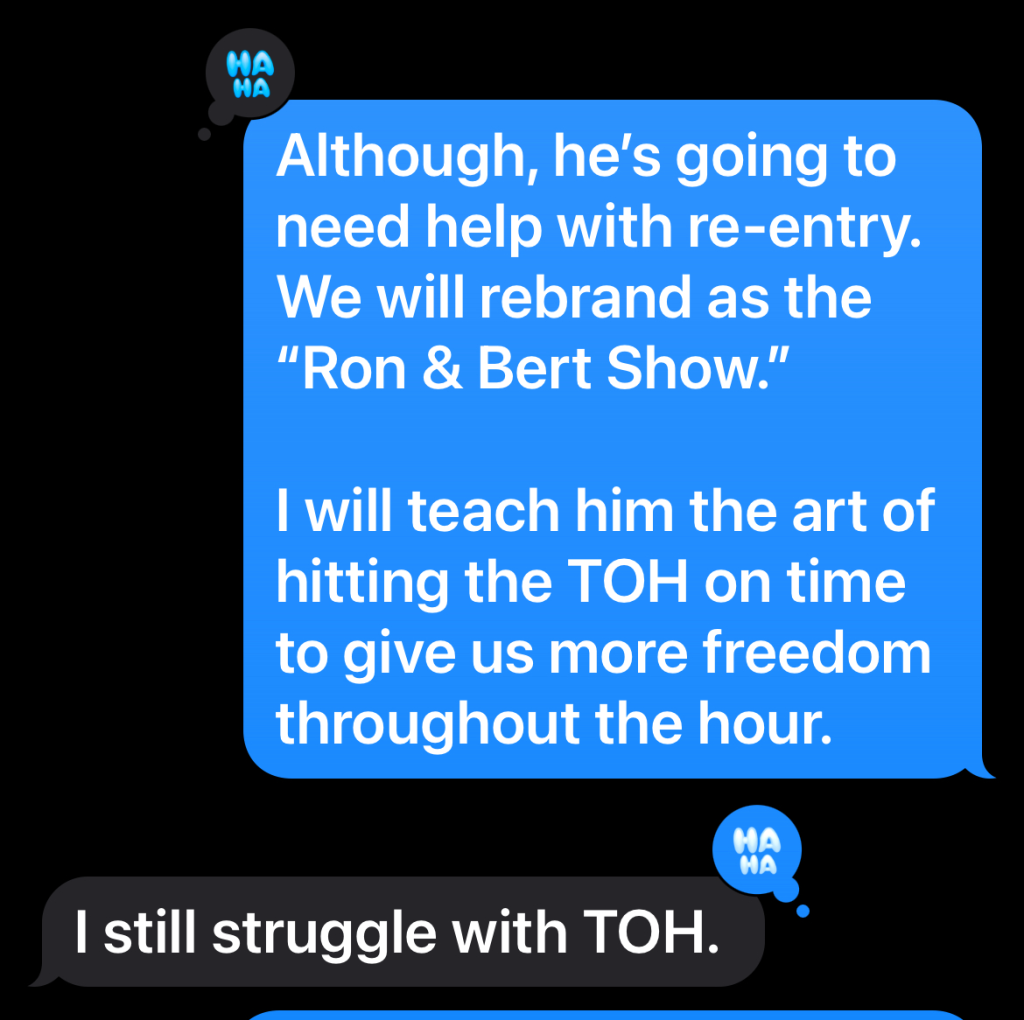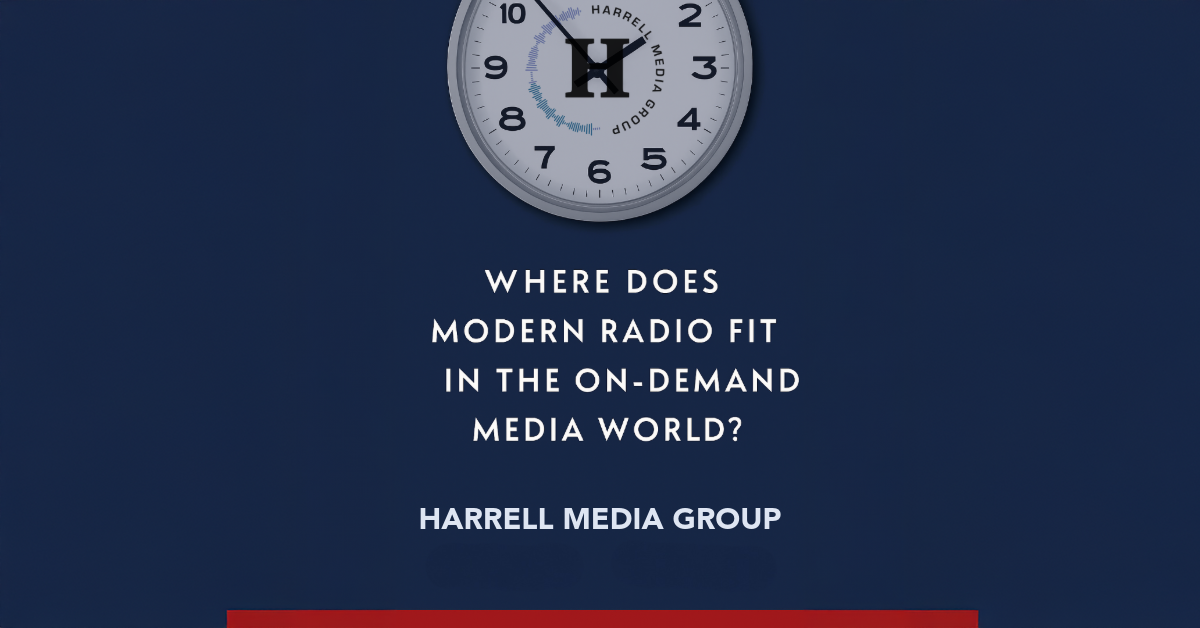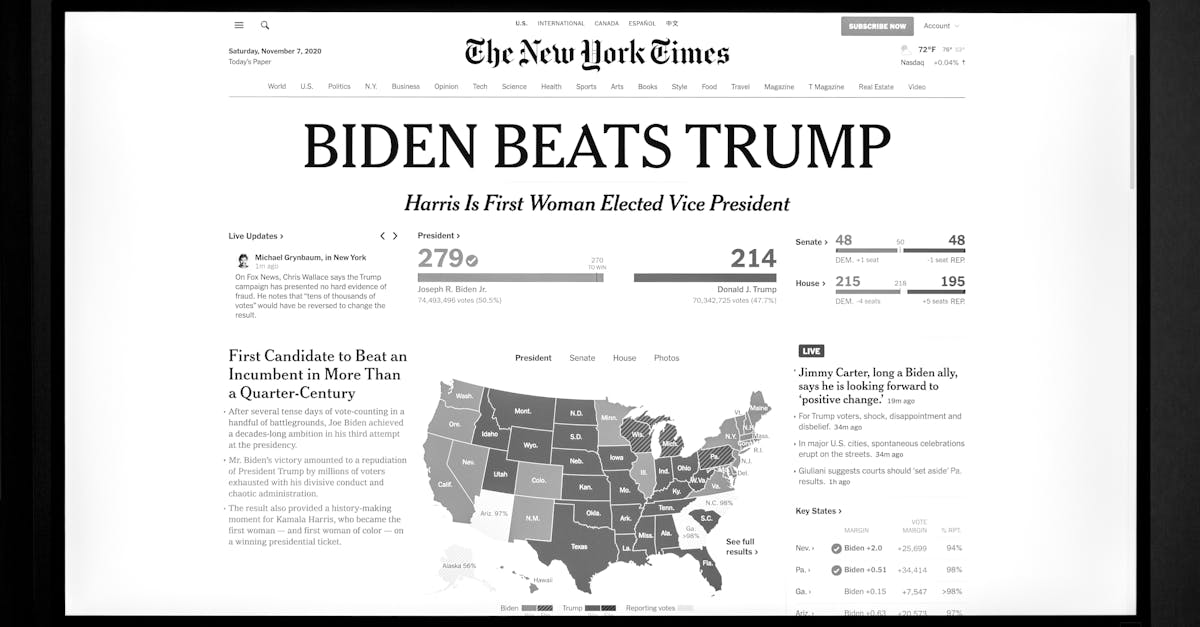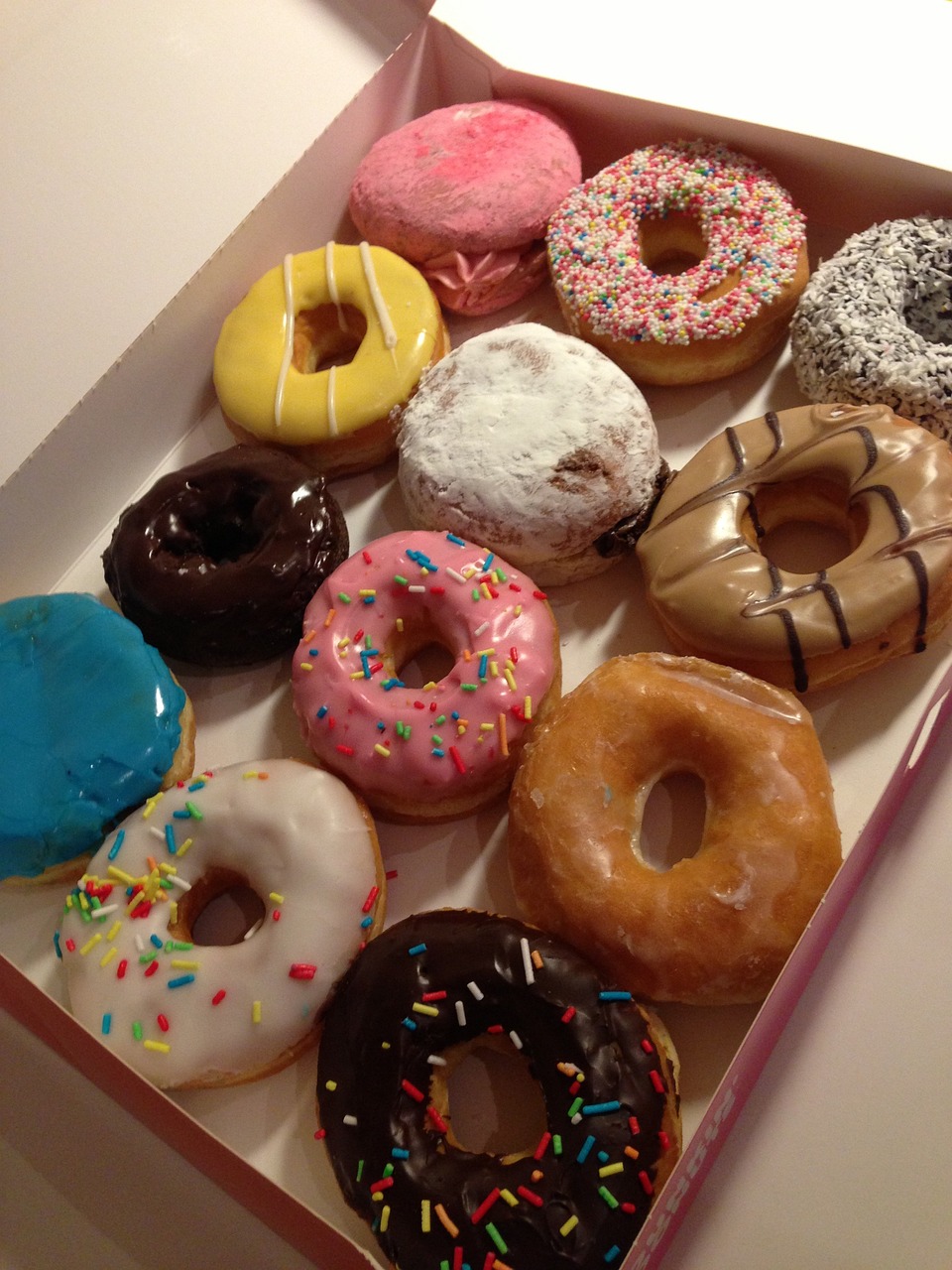There’s a term I use in text or email that requires more explanation than it used to. “I’ll call you at the TOH.” Translation: Top of the Hour. I don’t use it with non-radio people because they don’t get it. However, TOH is losing relevance with some of my radio colleagues, and a recent exchange took me down another path related to my use of radio lingo. Where does modern radio fit in the on-demand media world?
The radio trade publications posted a Breaking News story last week about the retirement of another radio host. We’re becoming numb to these so-called “retirement” bulletins. The Bert Show, based on Q99.7 WWWQ Atlanta and syndicated across 18 other markets, is retiring October 24th.
A text exchange with my former CBS Dallas colleague, Tony Zazza, now of ZazzaNation, included my prediction that The Bert Show will return after a break from his current deal. Full transparency: I have no idea what will happen after Bert’s retirement. I’ve had no communication with Bert, the show’s members, or his management team.

It was easier to add content than to subtract it
However, the text gave me an opportunity for an inside joke with a former morning show colleague. After I prophesied about Bert’s ‘Rapture’ (religion hot topic last week), I said to Tony, “…he’s going to need help with re-entry. We will rebrand as the ‘Ron & Bert Show.’ I will teach him the art of hitting the TOH on time to give us more freedom throughout the hour.”
For decades, I coached shows to start the new hour as close to the top of the hour as possible. Those shows didn’t have to hit the network news on the hour, where you had no choice but to be on time. However, it was a tactical principle originating from my years working in the early morning daypart. If I started the hour on time or a little early, it gave us more flexibility to pivot and make changes during the hour. We created margin.
If we started late, we were trying to decide what songs or content to drop to get back on schedule and play commercials at strategically placed stopset times, or execute contests and benchmarks during the times we promoted.
Bottom line: It was easier to add content than to subtract it. As I managed morning shows, this became an eye-rolling moment in meetings for those hosts in Denver, Detroit, Dallas, and Seattle. If you don’t have eye rollers, you’re not doing something right.
What’s on right now?
The On Time sermon has been revived in my current coaching life. Here’s why. The audience, young and old, but especially young, experiences audio and video content in an on-demand mode. Live radio was the original on-demand electronic medium. The consumer could turn it on to instantly hear information and music. That reality hasn’t changed.
However, radio’s on-demand quality isn’t perceived the same as Spotify, Apple Music, Hulu, or Netflix. Radio is ‘What’s on right now?’ If the song or news I want now isn’t on the radio when I tune to my station(s), then I have to wait or change the station.
Technological innovation changed our access to entertainment and information, but radio recognized the importance of creating an instant usage environment long before the term on-demand became part of our routine vocabulary. Radio hosts and audio promos teased features, songs, and benchmarks (recurring, branded programming elements) with strategic purpose.
Stupid criminal stories
There were a lot of choices on the dial. How could we get someone to give us a listening occasion because they wanted to hear “Second Date Update,” “Impossible Trivia,” “Stupid Criminal Stories,” “Traffic and Weather Together on the 8s,” “The Feel Good Story of the Day,” “Deep Cut of the Day,” or “The Verse of the Day”?
Music was promoted more often because it was new or because the station wanted credit for branding a specific genre of music. Contemporary Top 40 and Country stations aired quick “Coming Up” promos with song hooks from three popular current and power recurrent songs the station would play in the next 30 minutes. The benefit was two-fold: 1) Get a listener to stay through the commercials or come back after the spots to hear a favorite song. 2) Get imaging credit for playing those types of songs.
Prior to WiFi, when Blockbuster was our streaming service, radio stations promoted benchmarks, features, contests, and content in one place: the radio. As the electronic entertainment world has become more competitive and human attention spans have become shorter, like those of a goldfish, radio listening consumption has declined. So, why have we lowered our passion for promoting our most prized possession, the content?
Three reasons:
#1 Influence
- We operate in an on-demand environment. If you were born in the 21st Century, your access to audio/video entertainment and information has always been possible through on-demand channels. Those of us who were raised in the previous century had to program a VCR to tape the program or drive to Blockbuster to watch something on-demand.
- Promoting our radio benchmarks and what’s “coming up next” was more natural then because we watched Friends, Home Improvement, and ER in real time. We’ve experienced our information and entertainment on-demand in the last decade, and it has naturally influenced how we promote, or don’t promote, content on the radio. Newsflash: radio didn’t change its on-demand distribution (podcasts and recycled audio don’t count).
#2 Dark Studios
- I don’t mean the lighting. Voice-tracked shows have increased steadily outside of Prime hours (6A-7P) over the last 20 years. However, COVID rapidly created an opportunity and a need for a show to be recorded or hosted outside of the studio.
- As an industry, we improved our ability to do technically “sound” shows from anywhere with a WiFi connection. But the more we separated our talent from other talent in studios, they lost the human interaction and the chaos of a radio station. The Midday jock wasn’t communicating with the Afternoon host about the mood of the day or a reminder about a road closure as they changed shifts. The Program Director wasn’t stepping into the studio to say, “Hey, push the Secret Sound contest a few more times today. We’re getting close. Oh, and tease tomorrow’s Morning Show announcement once an hour. Have a great show!”
- Can all of that be done with a text, email, Slack, or Zoom interaction? Absolutely, and the electronic scheduling and reminders should help us better promote content and benchmarks. However, the lack of human interaction in the building subconsciously affects the in-the-moment feel of the radio experience.
#3 Usage
- It’s obvious radio isn’t the first place the audience can hear new music releases from Morgan Whalen, Bad Bunny, Taylor Swift, TobyMac, Kendrick Lamar, Lauren Daigle, or Sabrina Carpenter. It’s obvious radio doesn’t break news stories as quickly as social media. It’s obvious the GPS app will show the driver what’s happening on the roads faster than the radio traffic reporter can tell listeners about congestion on the main highways.
- However, we’ve forgotten we’re programming for people USING the radio. The audience can play contests, get instant updates and music information in many different places today. It doesn’t mean we should concede the content to the other platforms. If we do, then why does the audience need us? Give them a reason to listen.
Forward momentum
Radio isn’t going back to fully-staffed studios with big marketing budgets anytime soon. It’s a reason to program and sell like we have a time-tested, unique way to inform, entertain and commune with an audience. Start by promoting those time-tested benchmarks, features, and songs, like this is the only place a listener can hear it. Otherwise, we will become the background noise.

Ron Harrell
As the Principal Story Finder of Harrell Media Group, I offer brand and coaching services for radio stations, audio talent, and executive management. I’m available for public speaking engagements.
Contact me for a free No Copy & Paste review.



